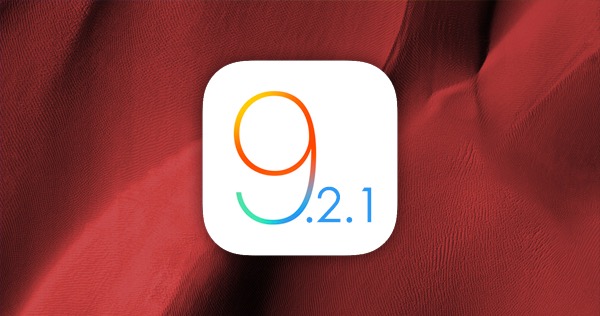Apple Officially Released iOS 9.2.1, But Is It Worth Downloading?

Toggle Dark Mode
After developers finished working through two beta versions, last night saw the official release of iOS 9.2.1. Users with an iPhone 4s or newer, iPad 2 or newer, iPad mini or newer, iPad Pro, and the fifth-generation or newer iPod Touch can download the update over Wi-Fi.
While iOS 9.2.1 doesn’t see the addition of any new, sexy features, it is full of security patches and performance upgrades – certainly worth a download. According to the official release notes, the update “contains security updates and bug fixes including a fix for an issue that could prevent the completion of app installation when using an MDM server.”

The update also patches several security holes that allow local users to execute code with elevated (kernel) privileges, and also addresses several security issues that may be taken advantage of while visiting malicious websites. Apple has released a full list of the security updates in iOS 9.2.1 here.
The security updates, while somewhat uninteresting, are a necessary part of any software update. Probably more interesting for most users are the performance enhancements. Although Apple hasn’t listed any specific performance-related updates, many users are reporting a smoother, speedier experience after administering the update. The performance enhancements seem to ring especially true while running the new OS on older devices.
A video posted by iAppleBytes shows a side-by-side comparison of an iPhone 4s running iOS 8.4.1 and another 4s running 9.2.1. While the device running 8.4.1 booted a bit faster than the device running the newer operating system, apps loaded and performed significantly faster on the phone running 9.2.1.
So far, the release of iOS 9.2.1 hasn’t seen the flood of complaints that many previous iOS updates have. Most users seem happy with the way 9.2.1 performs – with one exception, that is. The update has failed to address the battery indicator bug that has been plaguing iPhone 6s and 6s Plus users for quite some time now.
The bug causes the battery level indicator to fail to update itself, leaving users with no knowledge of how much battery life they actually have. Apple has officially acknowledged the problem, complete with a proposed temporary fix, but the company surprisingly didn’t build a permanent fix into the iOS update. The lack of this bug fix has many users unhappy, but Apple claims that it is “aware of [the] issue and is investigating the cause and a solution.”
Users on iOS devices should receive a notification for an automatic update, but users looking to manually update can navigate to Settings > General > Software update.
Apple is already beta testing iOS 9.3, which will include several new features, including “Night Shift mode”, multi-user support for iPads, and more. iOS 9.3 is expected to be released in late February or early March, ahead of the release of iOS 10, expected at this year’s WWDC in June.
Learn More: iOS 9.3 Will Officially Let You Hide Stock Apps, But It Won’t Be Easy






